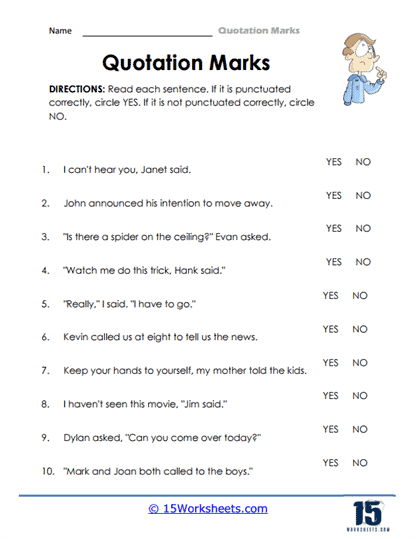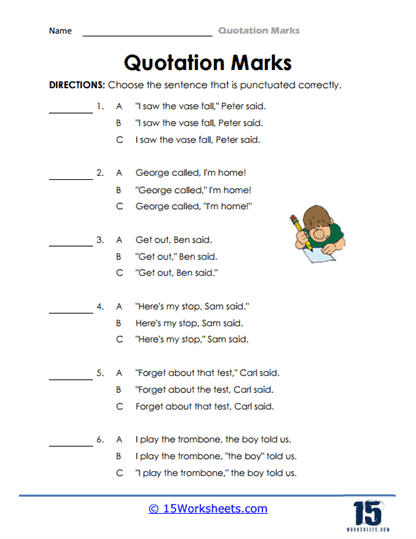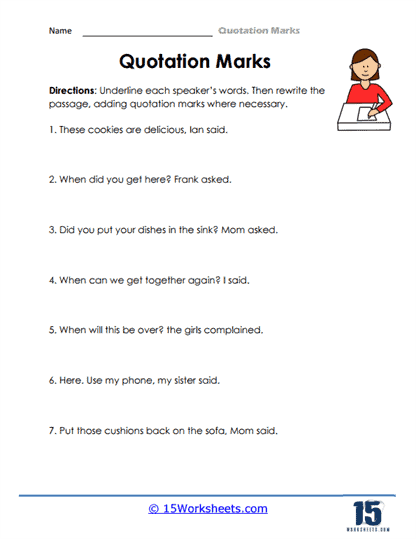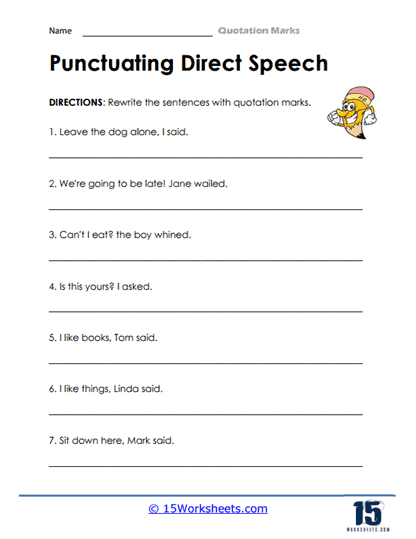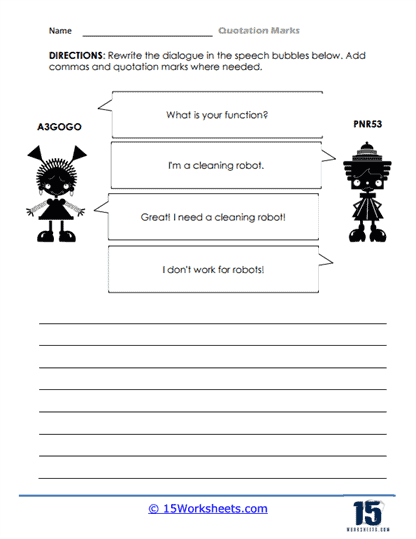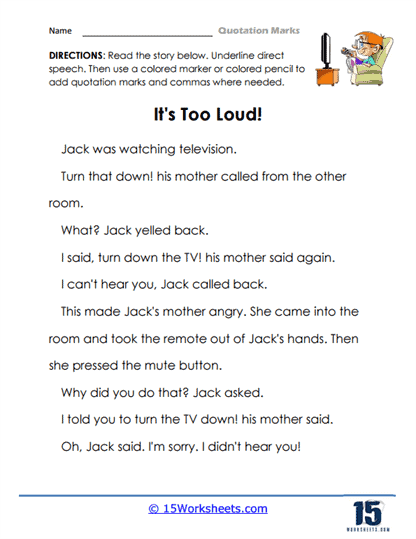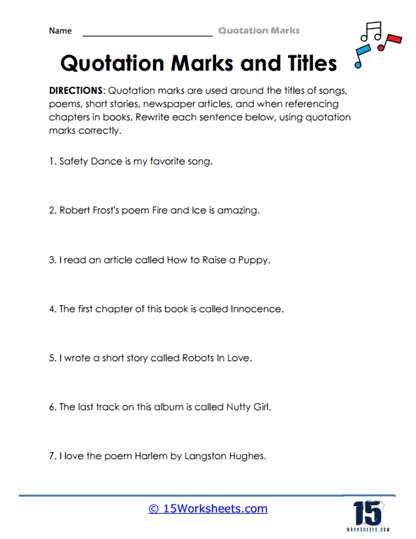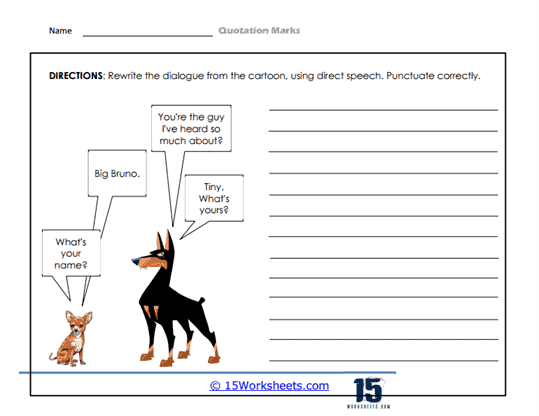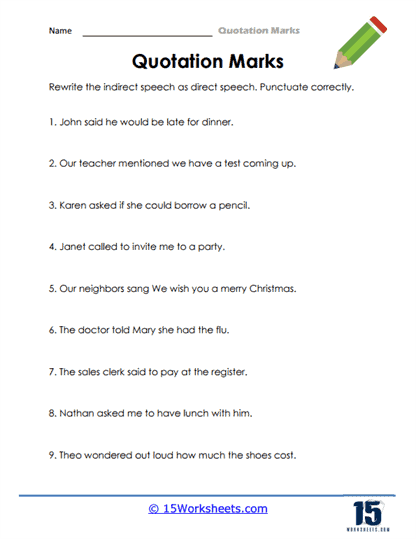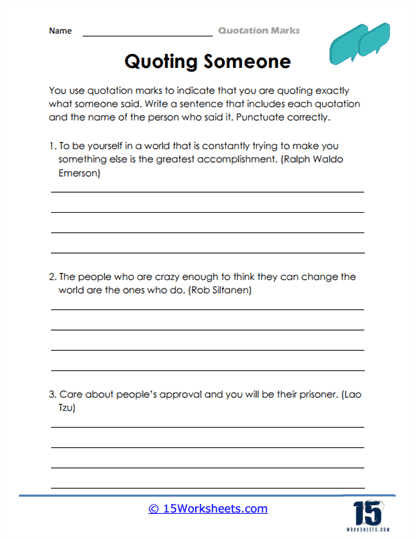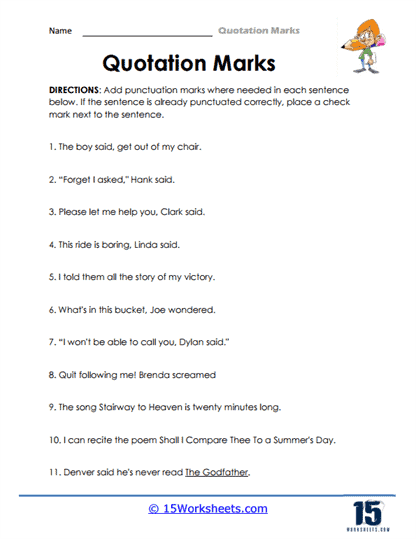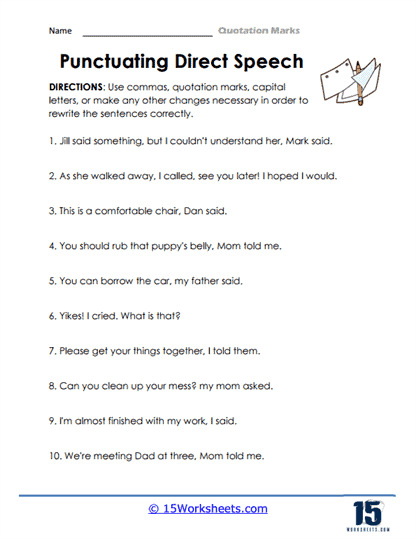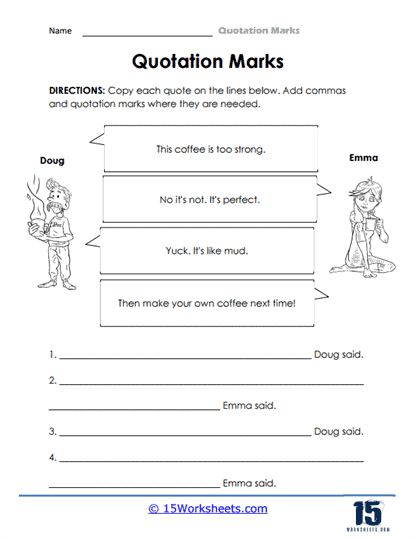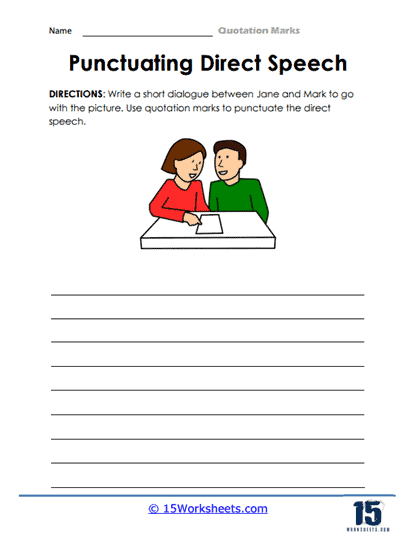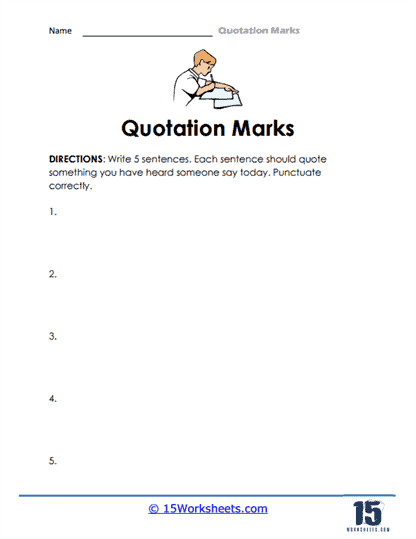Quotations Worksheets
All About These 15 Worksheets
You know how when you’re playing a game, you sometimes take turns? One friend goes first, then the next, and so on. Well, in writing, we have something similar when people take turns talking, and that’s where quotation marks come in.
Quotation marks are like little flags that show us someone is speaking in a story, like “Hello,” said Sally, or “I’m excited to go to the park,” John exclaimed. But using quotation marks can be tricky, and that’s where quotation worksheets come in handy!
Imagine quotation worksheets as your special trainers that guide you through the art of using quotation marks. These worksheets are full of fun exercises and challenges that will turn you into a quotation mark master.
Let’s look at some examples of activities you might find on these worksheets.
One common activity is to insert quotation marks where they belong. You might find a sentence like – John said, I’m ready to go now. Your job would be to correct it to – “John said, ‘I’m ready to go now.'”
Another activity might be rewriting sentences to include dialogue. For instance, you might see a sentence like – Sarah said she was going to the store. And you’d change it to – Sarah said, “I’m going to the store.”
Some quotation worksheets may even present you with a short story that’s missing all its quotation marks, and it’s your job to put them in the right spots. Or you might have to identify errors in sentences that use quotation marks, such as ones where the punctuation is on the wrong side of the quotation marks.
But remember, these worksheets aren’t just about learning where to put the quotation marks. They also help you understand how to punctuate sentences that have them. For example, you’ll learn to put a comma before a quotation that’s part of a sentence (like “She said, “It’s time for dinner.”) and where to put periods or other punctuation marks (like “Stop!” she shouted.).
Another great thing about these worksheets is that they help you learn how to use quotations when writing direct speech in stories. This means that you’ll be able to write awesome dialogue that will make your characters come alive!
In a nutshell, quotation worksheets are like your personal coaches in the sport of punctuation, teaching you the rules and strategies you need to play the game well. They let you practice, learn, and have fun, all at the same time. So, the next time you’re writing a story or just jotting down something someone said, you’ll know exactly how to use quotation marks to make your writing clear and engaging.
What Is The Difference Between Single And Double Quotation Marks?
The usage of single (‘ ‘) and double (” “) quotation marks can depend on the region (American English vs. British English), and the context in which they are being used. Here’s a basic breakdown:
American English – In American English, double quotation marks are used to indicate direct speech or a direct quote from a person or text. For example – Sarah said, “I love reading books.” Single quotation marks are used for a quote within a quote. For example – Sarah said, “When I met the author, he told me, ‘Reading expands your mind.'”
British English – British English typically reverses the American usage. Single quotation marks are used to indicate direct speech or quotes, and double quotation marks are used for a quote within a quote. For example – Sarah said, ‘When I met the author, he told me, “Reading expands your mind.”‘
Titles or Special Terms – Sometimes, especially in American English, single quotation marks are used to highlight a specific term, or to denote titles of articles, chapters, short poems, and other short works. Double quotation marks are used for the same purpose in British English.
Quotes and Reported Speech – When you’re quoting someone word for word, you use quotation marks (single or double, depending on your regional style). But if you’re just reporting what someone said without quoting them exactly, you usually don’t need quotation marks. For example – Sarah said she loved reading books.
Irony, Unfamiliar Terms, or ‘So-Called’ – Both single and double quotation marks can be used to highlight an ironic term, introduce an unfamiliar word, or indicate that something is ‘so-called’ or not exactly as it appears. For example – The ‘fresh’ strawberries tasted like cardboard.

